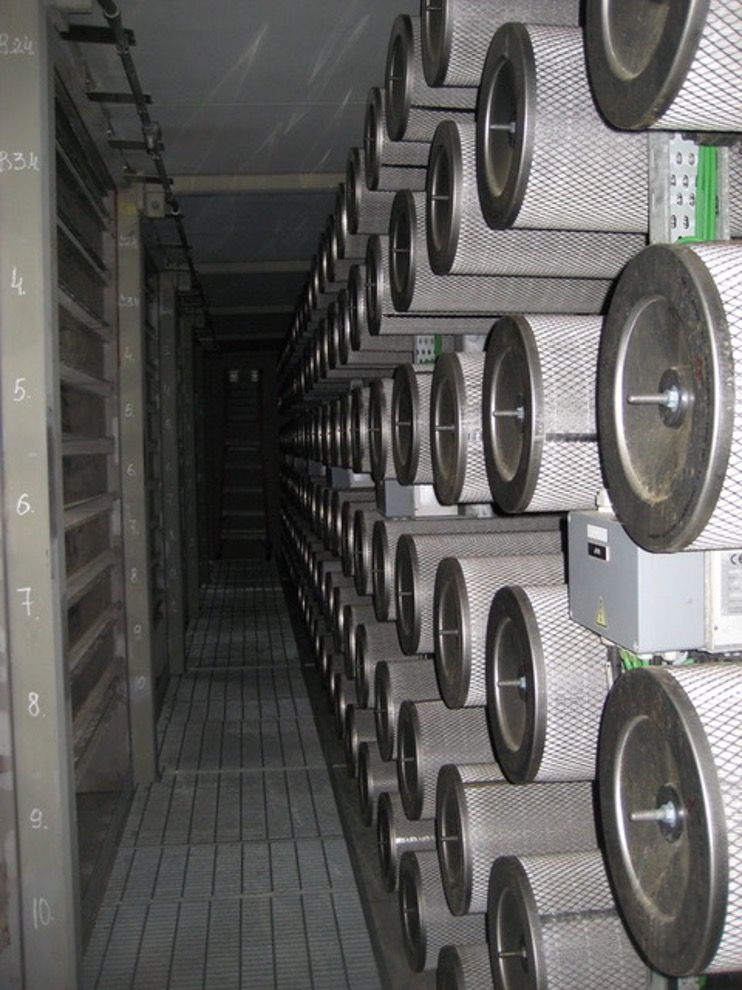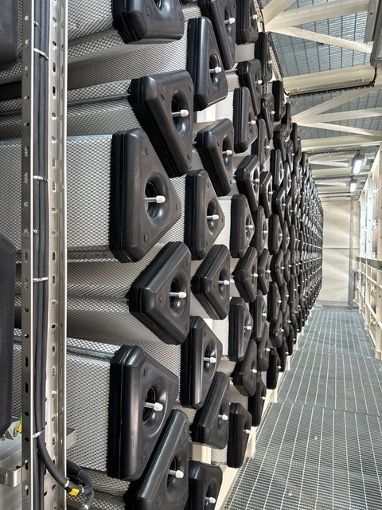CapEx: New Gas Turbine Models and Filtration Footprints
When deciding to refurbish or renew, gas turbine plant owners have to weigh engineering and economic factors, including the turbine’s footprint.
Gone are the days when a combined-cycle gas turbine could be expected to run for 8,000 hours or more a year. Increasingly, gas turbines are being deployed at peaking capacity or to fill the gap on a winter's day when there's no wind and little sun, for example. Simultaneously, widespread projections of soaring electricity demand in response to the electrification of transport and the meteoric rise of power-hungry data centers leave no questions about whether gas turbines will continue to play a major role in the power-generation portfolios of the future.
Switching gas turbines from baseload to peaking-type operations reduces their operating hours and impacts the economic model that has supported turbine deployment over the last decades. This is prompting owners and operators to take another look at how gas turbines are financed.
Shifting Power Market Prompts Tough CapEx Decisions
The changes in energy macro trends coincide with another major influence specific to the gas turbine market: A period of rapid growth in gas turbine capacity during which many F-class machines were installed, such as the GE 7F.03. In the early 2000s, the bubble saw orders for baseload gas turbines skyrocket and the emergence of a standard model coupled with a set of ancillaries, such as the heat recovery steam generator. However, many of those machines are now reaching the end of their service life, having operated for around 200,000 hours, and a new trend is forming.
Typical pulse cartridge filters installed in a land-based GT-HD housing.

Their turbine rotors will have to be replaced and either the whole machine will be scrapped and a new plant developed or, as an alternative strategy, the turbine internals will be replaced. This upgrade to later and more advanced technology offers higher efficiencies with a wider operating envelope, better ramp rates, and better part-load capabilities than previous generations. In addition, more significant economic and engineering factors are at play when deciding to completely replace a power plant or upgrade and refurbish an existing facility.
A new facility requires more substantial capital investment than refurbishment. And, while in both cases a more efficient and flexible machine will emerge, a wide range of economic and engineering factors must be considered. Critical factors include:
- the anticipated volume of electricity sales,
- the scale of capital investment and potential payback periods,
- lead times on equipment supplies, and
- engineering feasibility.
These considerations become more important in light of a new operating regime in which a plant may produce power for far fewer hours than a baseload facility.
Geometry pulse cartridge filter

Choosing the Right Filter Footprint
Given the challenging economics facing new builds and supply chain issues, which tend to favor refurbishment, many plant owners are looking to replace turbine internals to achieve desirable performance characteristics as cost-efficiently as possible. However, uprating a turbine rotor comes with challenges, notably the requirement to increase airflow through the machine as a consequence of the new combustion characteristics. Essentially, more power means more air. Refurbishing the turbine internals means increasing the performance of the air inlet and its filtration systems without increasing the pressure drop across the filter house or diminishing filtration performance that might negatively affect the turbine efficiency.
Improved pulse cleaning (Huff ‘n’ Puff) system and cycle for the new geometry filters.

An upgraded rotor and higher airflow would conventionally mean a bigger filter house, but this requirement is constrained by the available footprint at a brownfield site. Indeed, a larger filter house will not fit in the same footprint as an existing unit because an uprated system often has to be wider and taller. Many sites are critically restricted in width, especially if there is more than one gas turbine onsite with a fixed distance between them. In addition, height restrictions can also come into play due to power cables, fixed downstream ducting, or some other systems installed near the turbine. With space constraints affecting the available options, improving airflow performance is only possible by installing filters that run with a higher flow rate or fit within the same space.
Fortunately, while turbine technology has advanced to deliver improved performance, so have air inlet filtration systems. By using more modern and higher flow-rate technology, it is possible to have a filter house of similar dimensions to meet site constraints. Recent developments in filter elements can deliver appropriate airflow characteristics with no appreciable drop in air quality. The key development is that the filter geometry has changed, enabling a higher air flow rate for the same performance and improved nesting to optimize the space required for each filter. The changes in filter geometries—for example developing a generally triangular cartridge rather than a round one—were executed to reduce pressure loss and increase airflow throughput through the same space and reflect changing market demands.
Optimized geometry pulse cartridge filters installed in the same filter house typology.

This is only part of a series of air inlet assemblies, such as weather hoods and coalescers, evaporative coolers, pulse cleaning, and anti-icing systems, that will be required to squeeze into the same footprint. With the correct technology in place, this is achievable, and it may be possible to use the same support structure that had served the existing filter house for additional CapEx savings.
Owners are increasingly attracted to replacing end-of-life rotors in gas turbines. As a strategy, it represents an opportunity to upgrade to the latest power-generation technology with the lowest CapEx. The promise of increased power output, higher efficiencies, and better part-load flexibility are within reach and increasingly important in the current and rapidly evolving generation. Removing the need to replace the entire air inlet system could be a significant factor when considering CapEx, ultimately driving the decision to refurbish a power plant or start again from scratch.
About the Author
Steve Hiner is the Chief Engineer of Parker Filtration Group's Altair Business Unit, Filtration & Energy Solutions Division.